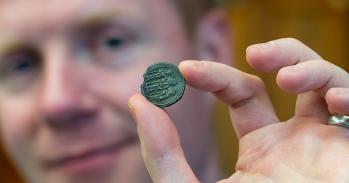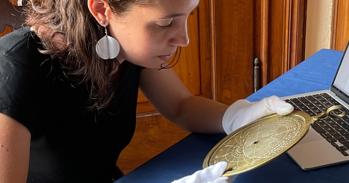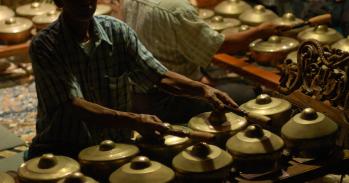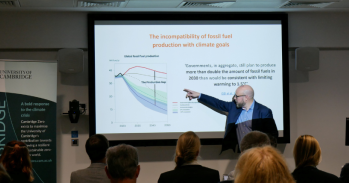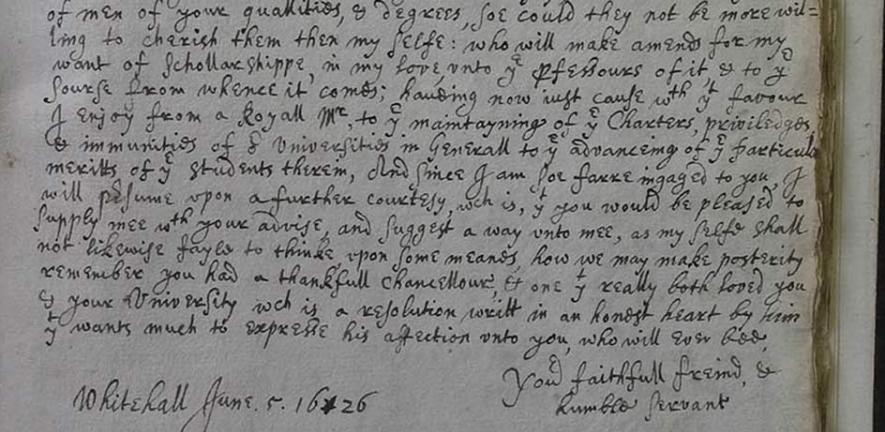
Cambridge is leading the way in Resource Enhancement projects in the UK, opening up its unique and valuable collections to scholars worldwide, as well as the wider public. There is a huge amount of activity in this area across a number of projects and disciplines, from digitising records of everyday life in medieval Britain to transcribing audio cassettes of oral history from south Asia.
Cambridge is leading the way in Resource Enhancement projects in the UK, opening up its unique and valuable collections to scholars worldwide, as well as the wider public. There is a huge amount of activity in this area across a number of projects and disciplines, from digitising records of everyday life in medieval Britain to transcribing audio cassettes of oral history from south Asia.
All interviews offer first-hand experience, and because they record the views of individuals, contain little or no bias, with clear benefits to academics.
Cambridge is leading the way in Resource Enhancement projects in the UK, opening up its unique and valuable collections to scholars worldwide, as well as the wider public. There is a huge amount of activity in this area across a number of projects and disciplines, from digitising records of everyday life in medieval Britain to transcribing audio cassettes of oral history from south Asia
Read the “filofaxes” of Early Modern Britain
The Scriptorium project, run by the Faculty of English, aims to provide open access to British commonplace books from the medieval and renaissance periods. The collection will be digitised and transcribed to improve access to the collection.
Commonplace books are a cross between diaries and scrapbooks, either owned by individuals or contributed to by groups or households, providing a rich seam of personal historical information. An aspect of the challenge of digitising the collection is that commonplaces are very difficult to categorise. There is no “typical” example: one book may be a set of household accounts, another may contain recipes, proverbs and tables of weights and measures; another still may be a “poetic miscellany”, recording the favourite poems, proverbs and prayers of a group of friends.
This introduces further complexity to the project, as commonplace books can contain entries in various languages and styles of writing so the Scriptorium will also feature an online palaeography course, allowing users of the resource to acquire the skills and knowledge to understand the scripts.
Voices from the past
The Centre for South Asian Studies is also engaged in an ambitious project to digitise and publish access to its Oral History Archive.
The value of the archive is without dispute. It takes the form of a collection of around 360 interviews, across 420 hours of playing time, plus transcription running to around 8,000 pages of text. All interviews offer first-hand experience, and because they record the views of individuals, contain little or no bias, with clear benefits to academics.
The media on which the interviews are stored are mainly cassette and reel-to-reel tapes. This means that the archive in its current form is fragile – magnetic tape being more fragile with each use unlike printed paper – and interest in the collection is increasing all the time. So there is a need to preserve the collection for future use, and at the same time broaden and enhance access.
The challenges involved in digitizing the collection have been immense. Often one interviewee’s output is recorded across multiple tapes, where blank space was available, which means that before output can even be transcribed, the order of the interview must be established and transferred to digital storage. This is not even to mention the variable sound quality, and the inclusion of a number of previously unknown words and terms.
Work began in March 2006 and from autumn 2006 it will be possible to trial the pilot project comprising ten interviews, chosen at random. The collection will be searchable by interviewee and by broad topic, and individual interviews can be searched (via their transcripts) by more detailed keywords. The transcripts can now be read, in the search-result areas, with the corresponding soundtrack running alongside. One of the purposes of the trial is to evaluate how researchers want to use the resource prior to launch of the final version.
Genizah: embodying Jewish survival
The Genizah On-Line Database (GOLD) project is a major undertaking for the Taylor-Schechter Genizah Research Unit and the University Library.
In 1898, 140,000 fragments of documents and texts recovered from the Cairo Genizah (the synagogue archive) were gifted to Cambridge by Dr Solomon Schechter. The items in the collection had taken less than 60 days to amass, but it has taken over a century to preserve, classify and house the greater part of them in a way that makes them easily available for study. Most of the fragments are in manuscript, and many are on vellum, which has contributed to the challenge.
The collection features a wide range of content, from the sacred, to the heretical, to the mundane. It has yielded a vast array of detail, including accounts of social, economic and religious activity; the development of Jewish law; the knowledge of famous scholars, sometimes in their own hand; medieval pronunciations of Hebrew; and rare examples of Jewish scientific, artistic and musical work mainly of the 11th and 12th centuries.
The Taylor-Schechter Genizah Research Unit was established in 1974 amid growing interest in the field of Jewish studies and the history of the medieval Meditteranean world. One of its key priorities has been to restore the collection and to improve access to it. Since it was founded, the Unit has not only catalogued the majority of the fragments, but also created a bibliography of scholarly works which reference the collection.
In many ways the latest phase of work is the most important, and lays the foundation for future possibilities in the field and research relating to the collection. The GOLD project aims to provide remote electronic access to the treasures of the collection and facilitate the production of further printed catalogues. Methods are being developed to enhance the efficiency of digital image production, and to bring dispersed manuscripts together through analysis of the descriptions of the manuscripts already produced by the Genizah Unit and by other co-operating projects.
This work is licensed under a Creative Commons Licence. If you use this content on your site please link back to this page.


